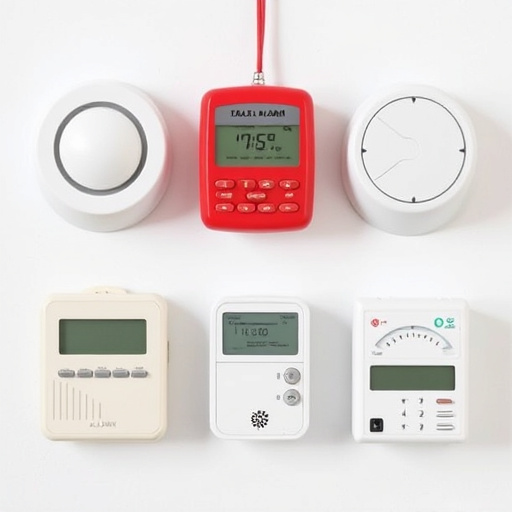Personal distress signals are vital for student safety, indicating anxiety, panic, or fear as immediate danger indicators. Technology, like compact personal alarm apps with automatic fall detection and smart device integration, enhances security for students navigating new environments. A well-designed compact personal alarm should be portable, feature a simple interface, include LED flashlights, strobe lights, a loud alarm, water resistance, GPS tracking, an integrated panic button, and app connectivity. Implementing these alarms proactively improves campus security, empowering students to discreetly signal for help in distressing situations through clear protocols and training, fostering swift reaction times from administrators, teachers, and emergency services.
Personal distress signals are crucial tools for students’ safety, especially as they navigate their academic journeys. With an increasing focus on well-being, understanding these signals and integrating technology can make a significant difference. This article explores how tracking apps and compact personal alarms can empower students to stay safe. We delve into the essential features of a portable alarm, its role in distress situations, and best practices for implementation, ensuring a comprehensive guide for educators and parents.
- Understanding Personal Distress Signals: Why It's Essential for Students
- The Role of Technology: Tracking and Safety Apps for Young Adults
- Designing a Compact Personal Alarm: Key Features and Functions
- Promoting Student Safety: Implementation and Best Practices
Understanding Personal Distress Signals: Why It's Essential for Students
Personal distress signals, often overlooked yet powerful tools, are becoming increasingly vital in ensuring student safety, especially on campuses where emergencies can arise unexpectedly. Understanding and recognizing these signals is crucial for several reasons. Students, being a vulnerable group, may find themselves in situations that trigger anxiety, panic, or fear, which are valid distress indicators. A compact personal alarm for students can be a lifesaver in such scenarios, as it allows them to quickly alert others about their immediate danger.
By learning and adopting these signals, students can become more proactive in managing their well-being. It enables them to communicate their needs effectively, especially in remote or isolated areas of the campus. This simple yet effective measure can foster a safer environment, empower students, and ensure prompt response during emergencies, ultimately enhancing overall security on educational institutions’ premises.
The Role of Technology: Tracking and Safety Apps for Young Adults
In today’s digital era, technology plays a pivotal role in enhancing personal safety, especially for young adults who are often navigating new environments and experiences. Tracking and safety apps have emerged as powerful tools to bridge this gap, offering peace of mind and an extra layer of security. These applications can detect and transmit user location data in real-time, allowing friends, family, or emergency services to quickly identify and assist in case of distress. With a simple tap, users can send alerts to their chosen contacts, even if they are unable to speak or are in an unfamiliar location, making it a compact personal alarm for students and young professionals alike.
Among the various apps available, some stand out as game-changers in personal safety measures. Features like automatic fall detection, panic buttons, and integration with smart devices enable users to access help instantly. For instance, a compact personal alarm app designed specifically for students can provide an additional sense of security while they navigate campus life or explore new cities. This technology empowers individuals to take control of their well-being, ensuring that help is just a tap away when needed most.
Designing a Compact Personal Alarm: Key Features and Functions
In designing a compact personal alarm tailored for students, key features focus on portability and functionality. The device should be lightweight, easily fit in a backpack or pocket, and possess a simple, intuitive interface. Built-in LED flashlights, strobe lights, and loud alarms are essential to attract attention quickly in various scenarios, from campus emergencies to late-night walks home. Water resistance is another valuable addition, ensuring students can use the alarm outdoors without worry.
Functionality extends beyond distress signaling. A GPS tracking feature enables users to share their location with trusted contacts or emergency services during emergencies. An integrated panic button initiates a pre-set alert and connects directly to local response teams. Additionally, smart integration with mobile apps allows users to set custom alerts, monitor battery life, and customize alarm profiles for different situations. These features collectively make the compact personal alarm an indispensable tool for students’ safety and peace of mind.
Promoting Student Safety: Implementation and Best Practices
Promoting student safety is a top priority in educational institutions, and implementing compact personal alarms for students offers a powerful tool to enhance security on campus. These innovative devices provide a simple yet effective solution for students who may find themselves in distressing situations. By equipping each student with a portable alarm, schools can enable them to quickly signal for help when facing emergencies, whether it’s during off-hours walks, after-school activities, or unexpected incidents within school premises.
Best practices involve ensuring all students are trained on how to use the alarms effectively and discretely. Regular demonstrations and drills can familiarize students with their functionality, fostering a sense of security and empowerment. Additionally, establishing clear protocols for alarm activation and response ensures that everyone knows what actions to take when a distress signal is heard. Collaboration between school administration, teachers, and local emergency services is vital for successful implementation, ensuring quick reaction times during any incident.
Personal distress signals, especially compact personal alarms, are becoming vital tools for student safety. By understanding the unique challenges faced by young adults and leveraging technology like tracking apps and innovative alarm designs, educational institutions can effectively navigate and mitigate potential risks. Implementing these solutions not only empowers students with a sense of security but also fosters a proactive approach to personal well-being. A compact personal alarm, tailored for students, offers a discreet yet powerful means of summoning help, ensuring that assistance is readily available when needed most.
